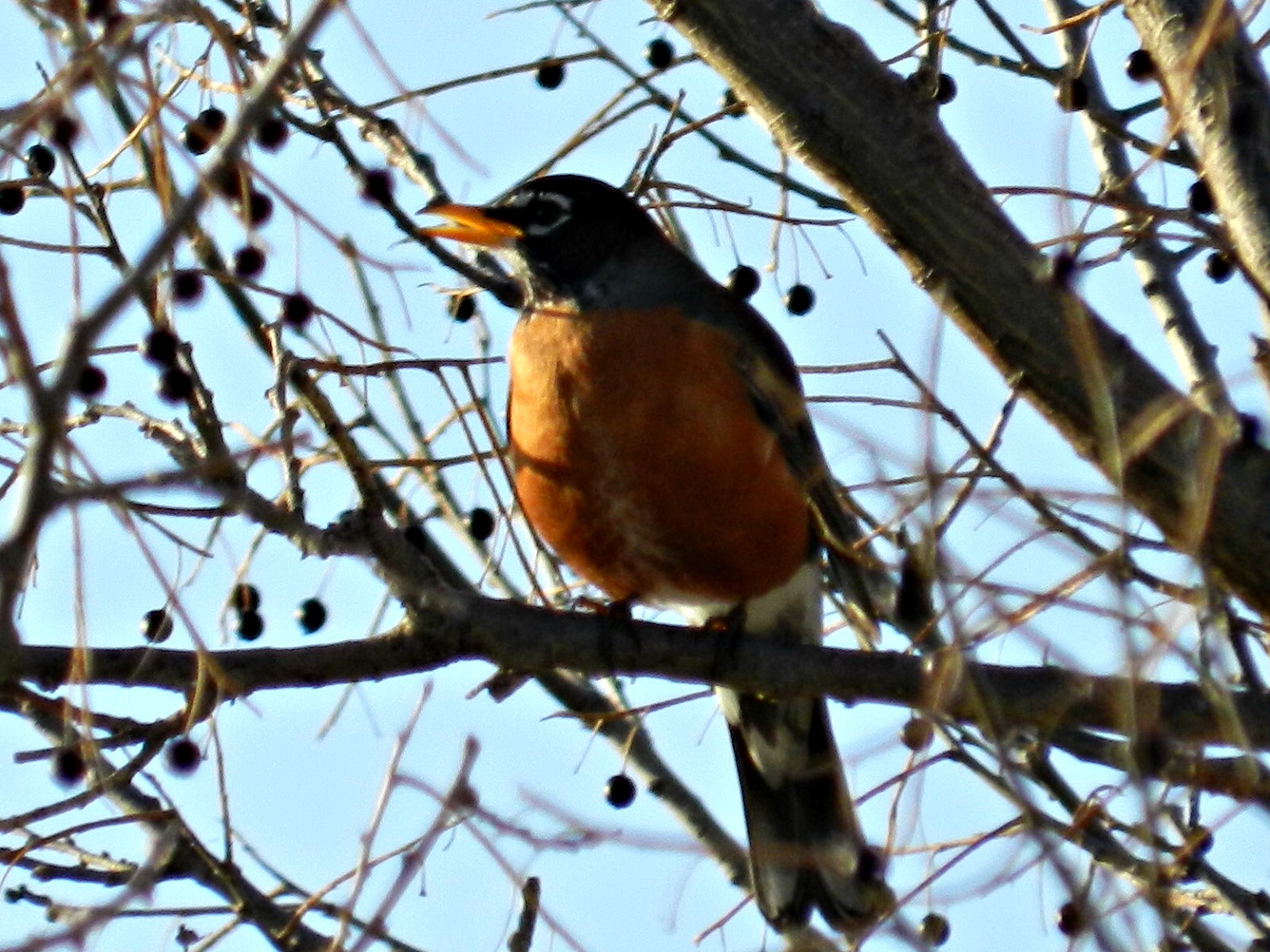
For folks who’ve seen more than their share of drought and blowing dirt, things have rapidly changed following recent storms. Instead of puddles just big enough for a bird to bathe in, running water fills fields, ditches, and culverts until it breaks through dikes, terraces, and highways. All too frequently, Mother Nature ignores the concept of balance when she’s dealing with her Great Plains. Despite the extra labor humans will have repairing storm damaged leaks, terraces, roads and more over the next weeks, robins delight in the emergence of scores of waterlogged worms.
During dry times, only gardeners digging in their flower and vegetable beds get a chance to meet the writhing neighbors that live right beneath us in reportedly huge numbers. One source commented that the mass of worms living beneath our soil surface outweighs creatures who live above ground. I’d like to find supporting documentation because that’s an impressive fact if it’s true.
Recollecting sophomore biology lessons, I learned that many of those wriggling creatures don’t have pulmonary systems like ours. Instead, they breathe through their skin so when soil soaking rains deluge a region these guys head for high ground. Humans who rose early and headed outside into the humid morning air undoubtedly noted scores of sodden earth worms covering sidewalks and any other high ground they could reach with their expiring muscle contractions.
At this point, this popular fish bait looks bleached and swollen. Once the sun rises and evaporates extra moisture from the air, what looks like an inflated bit of cellophane tubing shrivels into a crunchy, brown wire-like form. In the past, I’ve picked up more than one thinking it could cause a potential flat tire.
Before these carcasses desiccate, birds still fluffing their feathers to dry them after the earlier wind and rain perform their own thankful happy dance for the abundant feast lying at their feet. For at least a moment, they won’t have to work so hard for their dinner. Celebrating as they hop up and down the streets, gutters, and sidewalks, they gobble plump annelids left and right. I suspect mommas of the species are especially grateful, if bird brains have such thoughts, as many are responsible for nests full of hungry mouths noisily awaiting food.
Concerned about shriveled crops and blowing topsoil, many of us have prayed for rain over the past months. All hoped it would fall gently over a period of weeks. As so often happens in this region, our petitions were answered all at once. The powerful response descended in such a way it damaged much in its path.
While I’m sorry for the work this creates, knowing lakes, streams, and ponds are full comforts me. Watching hungry birds snarf up half-drowned worms is a bonus that makes me smile. They, too, may have to rebuild a nest or even court again if gusting winds knocked their hatchlings to the ground. Despite such issues, birds devour the banquet before them and trill tunes that I like to imagine express gratitude for the needed moisture.
Native Kansan Karen Madorin is a local writer and retired teacher who loves sharing stories about places, people, critters, plants, food, and history of the High Plains.

